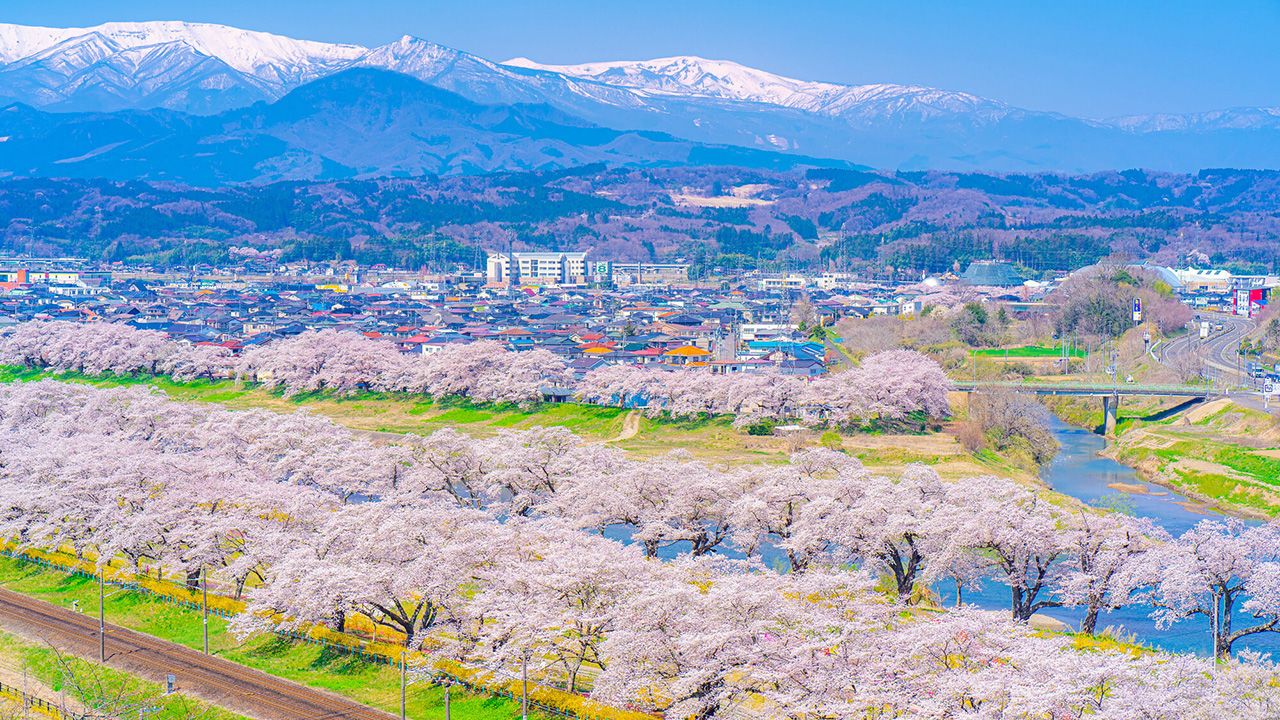
Miyagi Prefecture
Guideto Japan
Culture History- English
- 日本語
- 简体字
- 繁體字
- Français
- Español
- العربية
- Русский
Miyagi Prefecture lies on the Pacific coast of Honshū in the northern Tōhoku region. Rich in wild beauty, with almost a quarter of its territory falling inside of natural parks, it is famed for its coastline, in particular the hundreds of rocky islands of Matsushima, considered to be one of the three most spectacular scenic views in Japan.
Miyagi Prefecture at a Glance
- Established in 1872 (formerly part of Mutsu province)
- Capital: Sendai
- Population: 2,302,000 (as of Oct. 2020)
- Area: 7,282 km2
Miyagi’s capital is Sendai, the largest city in the Tōhoku district, with more than a million people calling it home. The prefecture’s location on the eastern side of the island of Honshū means that the high mountains along its western border with Yamagata Prefecture protect it from the worst of the winter storms blowing in from Siberia, and it enjoys relatively warm winters compared to neighboring areas in Japan’s north.
Miyagi borders Iwate and Akita to the north, Yamagata to the west, and Fukushima to the south. The west of the prefecture is mountainous, lying along the long Ōu range extending from Aomori in the north to Tochigi in the south. The bulk of the prefecture’s center is relatively flat, making it ideal for agriculture. Miyagi ranks first in the nation in production of seri (Japanese parsley) and bell peppers, and second in soybeans and Malabar spinach.
The northern Miyagi coast, including the Oshika Peninsula, presents rugged terrain characterized by numerous ria inlets. This was the area closest to the epicenter of the March 11, 2011, Great East Japan Earthquake, and many coastal communities like Kesennuma and Ishinomaki saw severe damage and high numbers of casualties in the disaster. The prefecture’s rich seas place Miyagi near the nation’s top in its production of nori and wakame seaweed, oysters and scallops, and farmed Coho salmon.
Miyagi’s shoreline is famed for its beauty, with the hundreds of islets of Matsushima being counted among Japan’s three most scenic spots. This area has been celebrated for centuries, as seen by the poet Matsuo Bashō’s visit to it in 1689, when he described it as the finest scenery in the country.

The beautiful seaside scenery of Matsushima. (© Pixta)
Electronics and other manufacturing industries cluster around the capital and largest city of Sendai, forming another mainstay of the prefectural economy.
Figuring large in the history of Miyagi was the renowned military tactician Date Masamune (1567–1636), who built Aoba Castle in Sendai and served as the first daimyō of the Sendai domain. During the Edo period (1603–1868) Sendai was the administrative center of the Mutsu province, extending north to include present-day Iwate and Aomori.

A statue of Date Masamune in Sendai displays his trademark crescent-moon helmet. (© Pixta)

Musubimaru, the tourism PR character of Sendai, Miyagi, has a face calling to mind a ball of Miyagi’s delicious rice, and wears a helmet called a katchū like that worn by Date Masamune. (© Jiji)
Famous Figures
- Yoshino Sakuzō (1878–1933): Political scientist. In the 1910s, he spent several years doing research in Europe and the United States; upon his return to Japan, he began exploring ways to implement democratic principles in his country, refining the minpon-shugi theory that placed people at the center of democracy without doing away with the imperial institution. Known as a father of the Taishō democracy that flowered during the interwar years.
- Fukuhara Ai (1988–): Table tennis player. Competed at the 2004 Athens Olympics, becoming the youngest-ever table tennis athlete to take part in the games. She would also compete in Beijing (2008), where she was the national team’s flag-bearer, London (2012), and Rio de Janeiro (2016).
- Hanyū Yuzuru (1994–): Figure skater. Won two Olympic gold medals in the men’s singles competition, in Sochi in 2014 and Pyeongchang in 2018. Turned professional in 2022 and remains one of the most popular athletes in any sport in Japan.
(Originally published in English. Banner photo: The hitome senbon-zakura, a place to “view a thousand trees at a time,” along Miyagi’s Shiroishi River. © Pixta.)
For the complete list of the country’s 47 prefectures, see “The Prefectures of Japan.”

